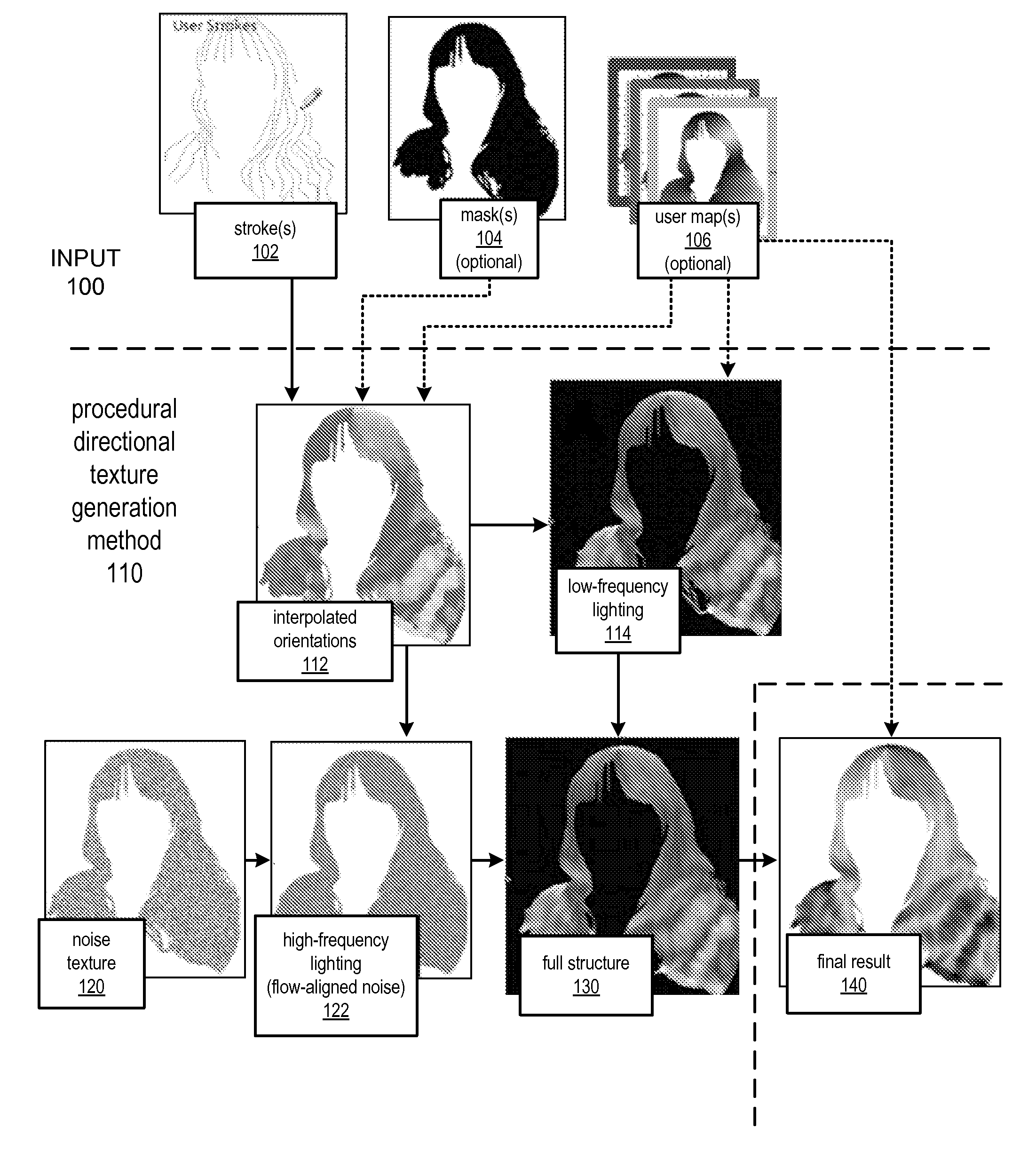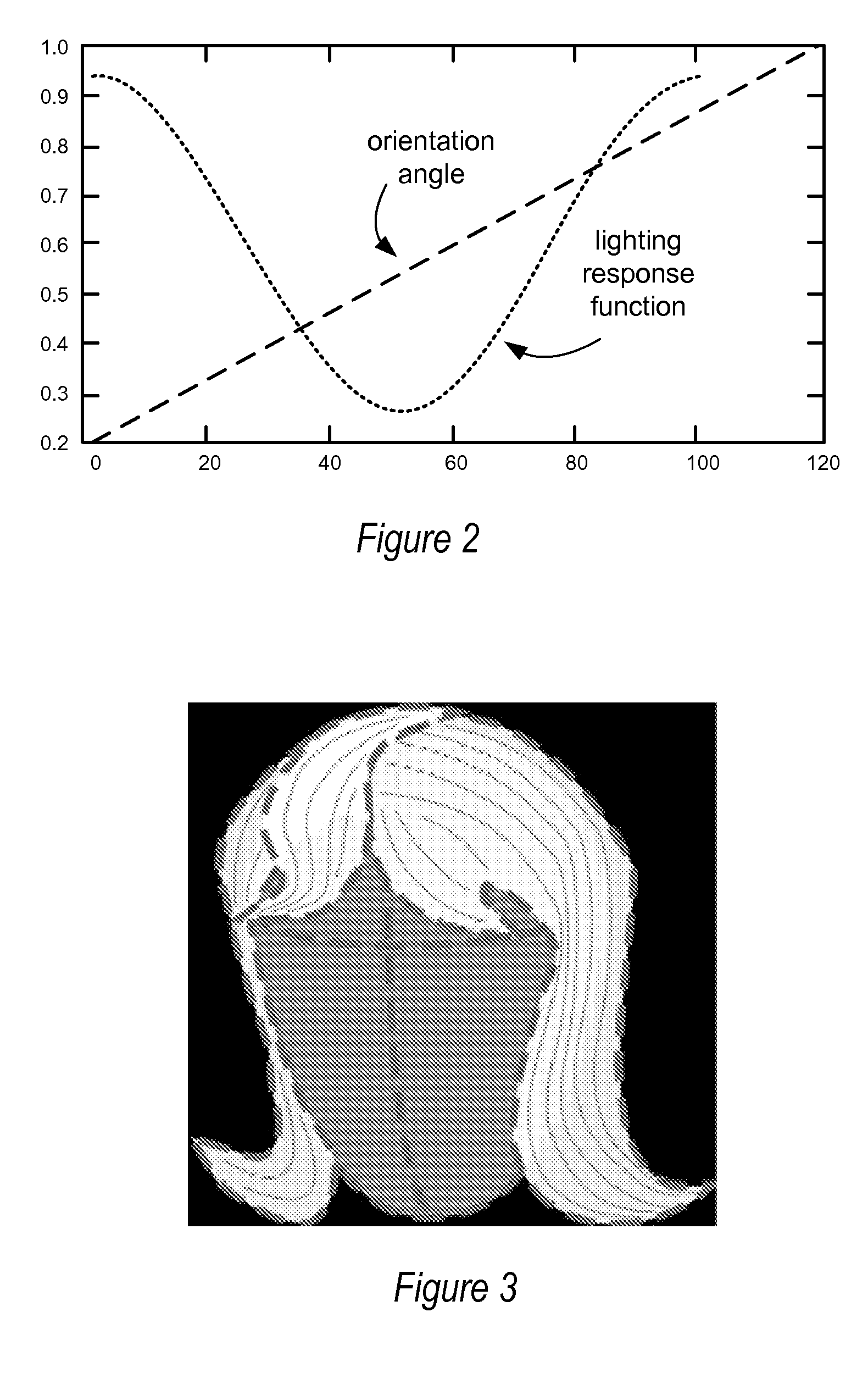Methods and apparatus for procedural directional texture generation
a directional texture and procedural technology, applied in the direction of texture/coloring, filling the planer surface with attributes, instruments, etc., can solve the problems of complex time-consuming, complex and time-consuming, and difficulty in generating directional textures, and achieve a wide range of directional texture styles and good visual quality
- Summary
- Abstract
- Description
- Claims
- Application Information
AI Technical Summary
Benefits of technology
Problems solved by technology
Method used
Image
Examples
example implementation
of the Directional Texture Generation Methods
[0113]FIG. 20 illustrates an example directional texture generation module that may implement one or more of the directional texture generation methods illustrated in FIGS. 1 through 19. Module 900 may, for example, implement one or more of a procedural directional texture generation method 902, a sample-based texture synthesis directional texture generation method 904, and an image warping directional texture generation method 906. FIG. 21 illustrates an example computer system on which embodiments of directional texture generation module 900 may be implemented. According to the various directional texture generation methods, module 900 may receive, as input, one or more strokes 912, one or more optional user maps 914, one or more optional masks 916, samples 918, and / or primitives 920, and possibly other input. In some embodiment, module 900 may also receive user input 910 specifying one or more strokes 912. Module 900 may also receive o...
PUM
 Login to View More
Login to View More Abstract
Description
Claims
Application Information
 Login to View More
Login to View More - R&D
- Intellectual Property
- Life Sciences
- Materials
- Tech Scout
- Unparalleled Data Quality
- Higher Quality Content
- 60% Fewer Hallucinations
Browse by: Latest US Patents, China's latest patents, Technical Efficacy Thesaurus, Application Domain, Technology Topic, Popular Technical Reports.
© 2025 PatSnap. All rights reserved.Legal|Privacy policy|Modern Slavery Act Transparency Statement|Sitemap|About US| Contact US: help@patsnap.com



